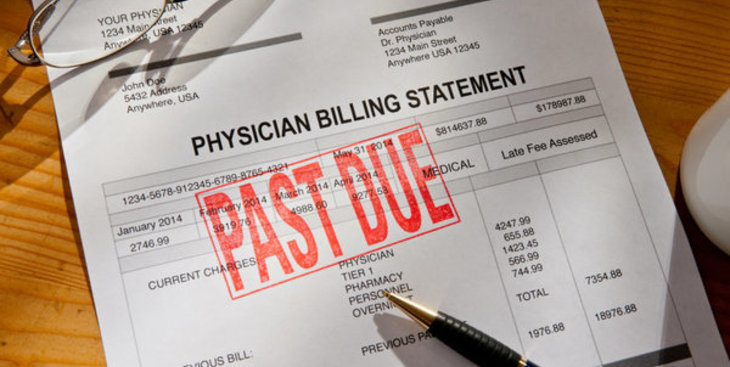 Younger consumers are more likely to treat hospital bills much like their other consumer interactions, and more willing than older patients to pay for services with a credit card over the phone. (Photo: Shutterstock)
Younger consumers are more likely to treat hospital bills much like their other consumer interactions, and more willing than older patients to pay for services with a credit card over the phone. (Photo: Shutterstock)
A new report takes a close look at consumer satisfaction with the hospital billing process, and finds that hospitals are getting better marks from consumers overall. However, consumers also expressed a desire for clearer information on out-of-pocket bills. And the results suggest that hospital bills are more likely to be paid in full if consumers are happy with the billing process.
The study, conducted by Connance, a health care analytics firm, surveyed 500 consumers about their last hospital encounter and their experience with the hospital business office. The report found that patient satisfaction with hospital billing offices has been increasing in recent years; this survey found that 54 percent of respondents rated their last billing experience as positive, saying they were either “very satisfied” or “more than satisfied.”
Related: 30 percent of consumers don't understand what an EOB is
On the other hand, high out-of-pocket costs may drive consumers away from physicians or hospitals: the survey found that more than 50 percent of patients indicate that out-of-pocket costs will have significant or highly significant influence on provider choice.
“The unfolding transformation of health care is daunting and complex, but as this survey shows, also filled with sizable opportunities to improve and reshape the relationship between providers and consumers. Consumers are expressing strong opinions and preferences,” said Steve Levin, EVP of Strategic Alliances at Connance. “This survey provides some helpful insights into current consumer-provider relationships and where and how providers can take actions that will improve the satisfaction with their most important constituent, the patient.”
Consumer satisfaction tied to payment
One topic the study explored is the relationship between patient satisfaction and full payment of bills. For example, when consumers report being very dissatisfied with the hospital business office, just over 25 percent report that they have fully paid their bills. When patients say they are very satisfied with the experience, the pay-in-full number is nearly 75 percent. (The results also show that some consumers are still in the process of resolving bills.)
“Payment activity shows some correlation to business office interaction, meaning improved experience should impact cash,” the report said. “This is also not to say a bad interaction leads to failure to pay. It simply implies that when patients have bad interactions, there is also likely a difficult collection experience. The bad interaction could be about confusion in the bill or some other dimension in the hospital-patient lifecycle.”
Surprise: consumers don't like surprises
The Connance study also found that larger out-of-pocket bills result in more calls to the hospital's business office. For bills of $500 to $1,000, more than 50 percent of respondents said they had called the business office or planned to. For bills over $1,000 that number is close to 75 percent.
The study also found that when bills exceeded the patients' expectations, 63 percent said they had called or will call the hospital business office. When the consumers' payment responsibility met their expectations, 70 percent did not call the hospital. The study's authors say consumers need more clarity on their financial responsibility for services.
“Larger consumer balances and surprises in the balance due are increasing the need to speak to business office teams,” the study said. “The larger the bill, the more likely patients will call the business office after service, which drives service center cost. Clearly, there is a potential benefit to moving engagement with patients earlier and adding transparency.”
A generational difference
Another interesting finding from the study is that younger consumers are more likely to treat hospital bills much like their other consumer interactions. They are more willing than older patients to pay for services with a credit card over the phone, for example.
Younger people are also more likely to ask a friend or health care expert to review their bill. Thirty percent of respondents between the ages of 27 and 39 said they would do so; about half that number of the 40-to-64 age groups said they would be willing to have someone else review their bill. About 10 percent of those over 65 were willing to share their bill with a friend or health care expert. “This could be an opportunity to better engage and educate [younger consumers] on the billing experience,” the study said.
Consumer confusion about providers and insurers
The survey also showed that many consumers continued to be confused about the basics of health care billing, and the different roles that hospitals and insurers play. For example, 25 percent said they did not know what an Explanation of Benefits was. When asked who they most trusted to provide the best estimate of service cost, 53 percent picked insurance companies. Hospitals were in second place at 19 percent, but that was also a virtual tie with the “none of the above” category. Physicians' ability to give an accurate estimate came in last with survey respondents.
The report's authors conclude that better communication and information about billing will help both consumers and providers.
“Over the past few years, providers have invested in systems, people and process to improve the patient experience in billing interactions,” the study said. “Those efforts have clearly paid off but the journey is not over yet. There remains significant opportunity. If we listen carefully, consumers are telling us where and how to invest and with progress, the industry should also see the financial benefit.”
Read more:
© 2025 ALM Global, LLC, All Rights Reserved. Request academic re-use from www.copyright.com. All other uses, submit a request to [email protected]. For more information visit Asset & Logo Licensing.







